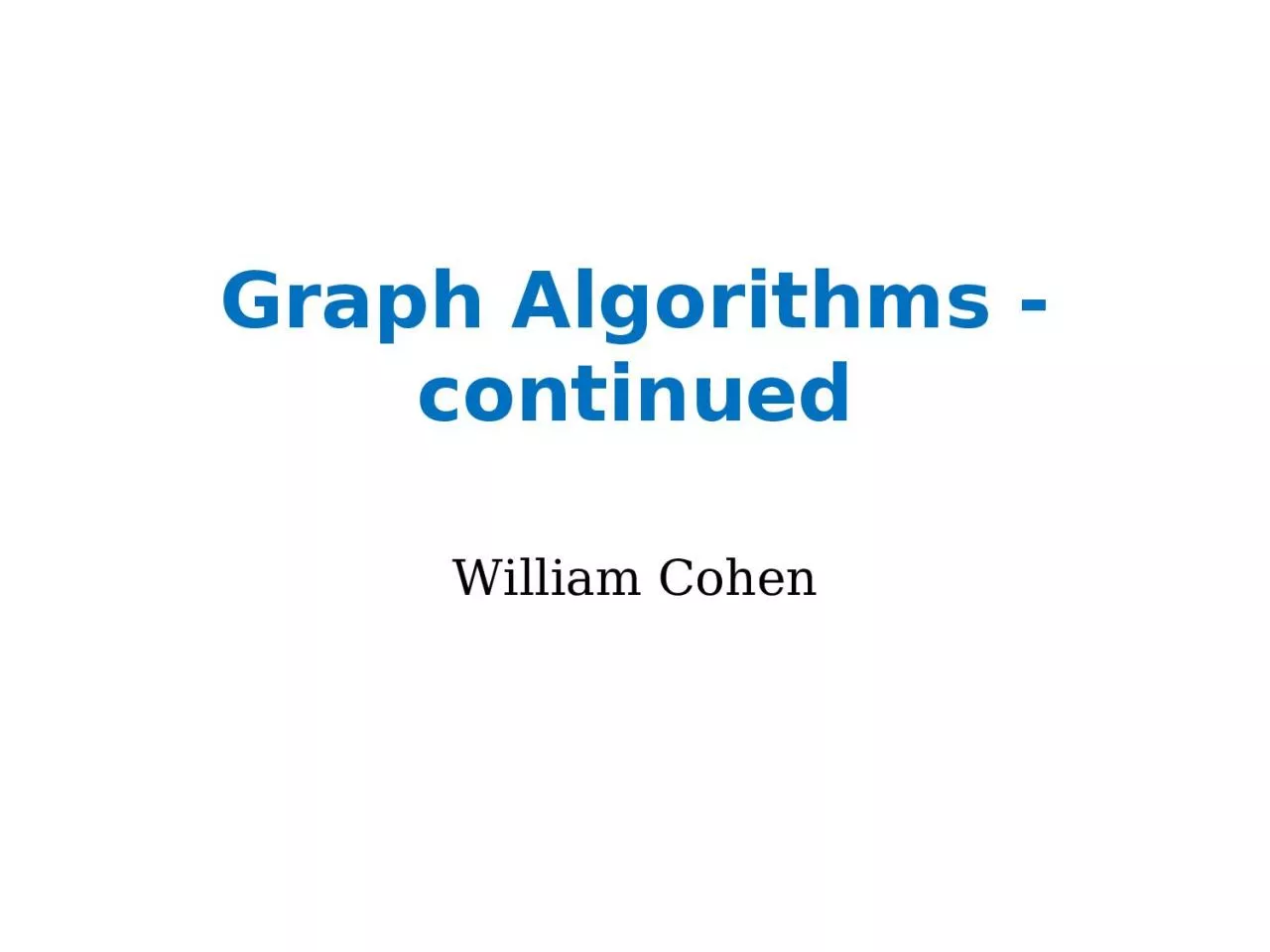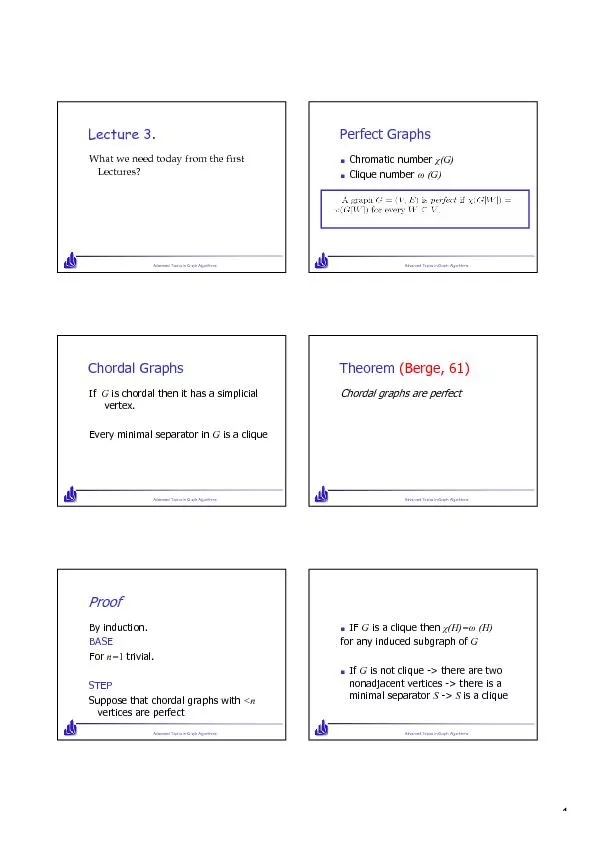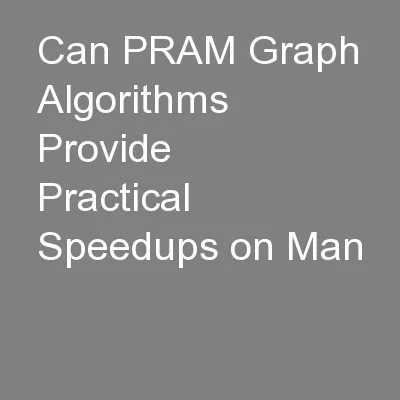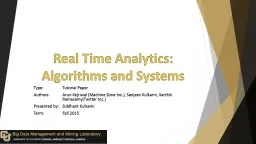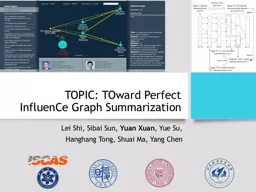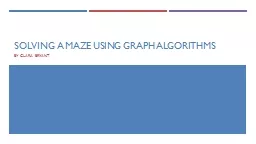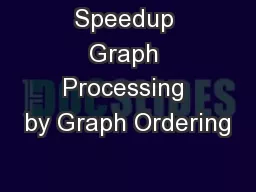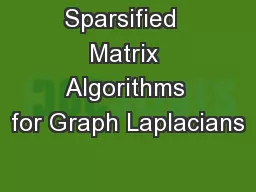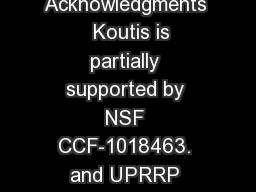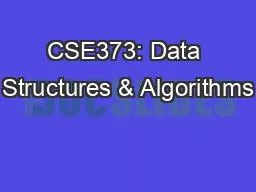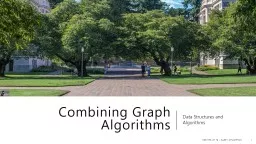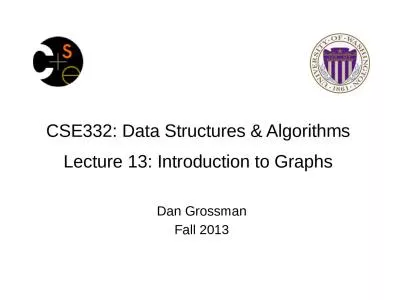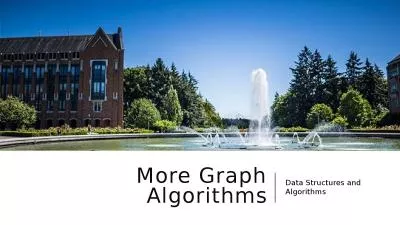PPT-Graph Algorithms - continued
Author : emma | Published Date : 2023-10-30
William Cohen Outline Last week PageRank one sample algorithm on graphs edges and nodes in memory nodes in memory nothing in memory Aapo Properties of social graphs
Presentation Embed Code
Download Presentation
Download Presentation The PPT/PDF document "Graph Algorithms - continued" is the property of its rightful owner. Permission is granted to download and print the materials on this website for personal, non-commercial use only, and to display it on your personal computer provided you do not modify the materials and that you retain all copyright notices contained in the materials. By downloading content from our website, you accept the terms of this agreement.
Graph Algorithms - continued: Transcript
Download Rules Of Document
"Graph Algorithms - continued"The content belongs to its owner. You may download and print it for personal use, without modification, and keep all copyright notices. By downloading, you agree to these terms.
Related Documents

